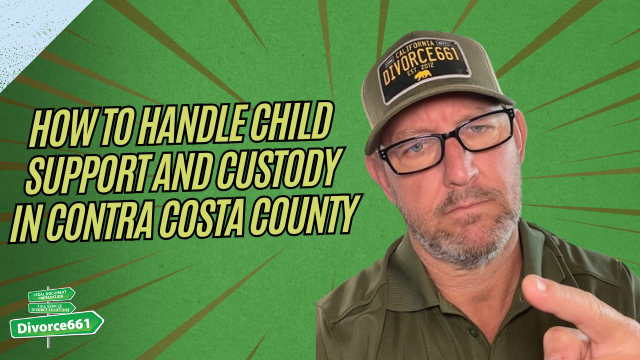How to Modify Your Divorce Agreement in Santa Clarita
Can you change a finalized divorce agreement in Santa Clarita? The short answer is yes for certain issues and no for others. If custody, child support, or spousal support no longer works because circumstances changed, you may be able to modify the court orders. Property division is generally final unless both parties agree or there was fraud or a legal mistake.
Can I modify my divorce agreement in Santa Clarita? The answer is yes.
Which parts of a divorce agreement can be modified
- Spousal support — Modifiable if circumstances change, such as job loss, reduced income, or a significant change in either party’s financial situation.
- Child support — Modifiable based on changes to income, custody time shares, or the child’s needs.
- Custody and visitation — Modifiable when the best interests of the child require a change, or parental circumstances materially change.
- Property division — Usually final. Property orders cannot be modified by the court after judgment except when both parties agree in writing or if the original agreement involved fraud or a demonstrable mistake.
Common situations that lead to modifications
- Job loss or significant reduction in income
- Substantial increase in income for the paying spouse
- Changes in the child’s needs or schooling
- Relocation or a parent requesting a new custody schedule
- Mutual agreement between ex-spouses to change terms
How the modification process works in Santa Clarita (step by step)
There are two basic pathways: you and the other party agree to the change, or one party asks the court to modify the order. Here is how the typical process plays out.
- Determine whether the issue is modifiableConfirm the subject of the order falls within what California courts can change after judgment. Support and custody are modifiable; property division usually is not.
- Gather documentationCollect proof of the changed circumstances: pay stubs, termination notices, letters from employers, tax returns, school records, or other supporting documents.
- Negotiate or draft a stipulationIf both parties agree, prepare a written stipulation setting out the new terms. An agreed stipulation often avoids a court hearing and speeds up approval.
- Prepare and file required formsComplete the appropriate post-judgment paperwork and file it with the family court in Los Angeles County. If you are seeking a modification without agreement, you will typically file a Request for Order and serve the other party.
- Court review and orderIf the parties submitted a stipulation, the court can usually sign the agreement without a hearing. If the modification is contested, the court may schedule a hearing to decide.
- Finalize and enforceOnce the judge signs the new order, it becomes enforceable just like the original judgment.
Real example: lowering spousal support after job loss
One common scenario is a paying spouse losing their job and needing lower spousal support. If both parties agree, they can sign a stipulation reflecting the new amount and submit it to the court. In many cases the court will approve the stipulation and enter the revised order without a hearing, saving time and legal expense.
When property division can be changed
Property division orders are final in most cases. The few exceptions include:
- Mutual written agreement — Both parties can agree in writing to reopen or change property terms.
- Fraud or mistake — If the original agreement was based on fraud or a clear legal error, a court may set aside or reform the order.
Generally, you should assume that property division cannot be modified unilaterally after the judgment without one of these exceptional circumstances.
Tips to increase the chances of a smooth modification
- Document everything. Paper trails for income changes and job status are critical.
- Try to reach agreement. Stipulations signed by both parties often avoid hearings and speed approval.
- Keep communication focused and professional. Clear, written proposals reduce misunderstandings.
- Get proper forms completed and filed correctly to prevent unnecessary delays.
Getting professional help
Modification paperwork and court procedures can be confusing. Legal professionals who specialize in post-judgment modifications can help you determine whether your agreement can be changed, prepare the required forms, and file them correctly.
If you are dealing with spousal support, child support, or custody changes, a properly drafted stipulation and accurate filing can often resolve the issue quickly—sometimes without a court hearing. If you need assistance, consider scheduling a consultation to review your situation and explore the best path forward.
Next steps
- Check whether your issue is modifiable under California law.
- Collect documentation that proves the change in circumstances.
- Decide whether to negotiate a stipulation or file a Request for Order.
- Get professional help to ensure forms are prepared and filed correctly.
Modifying a divorce agreement is possible when the right conditions exist. With the correct approach and documentation, you can get court-approved changes to spousal support, child support, or custody that reflect your current situation.










